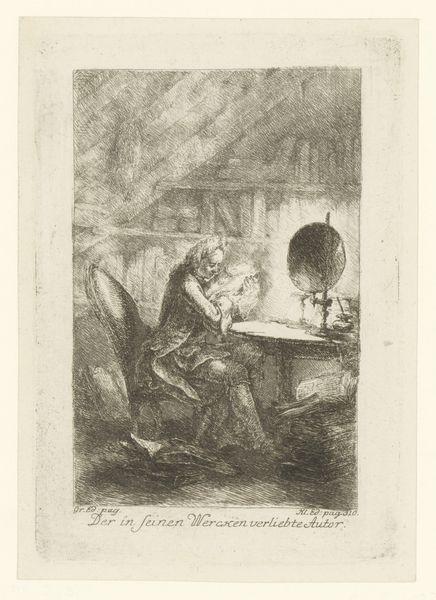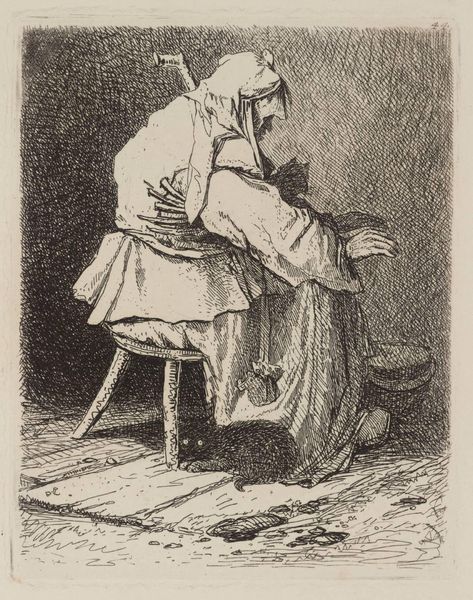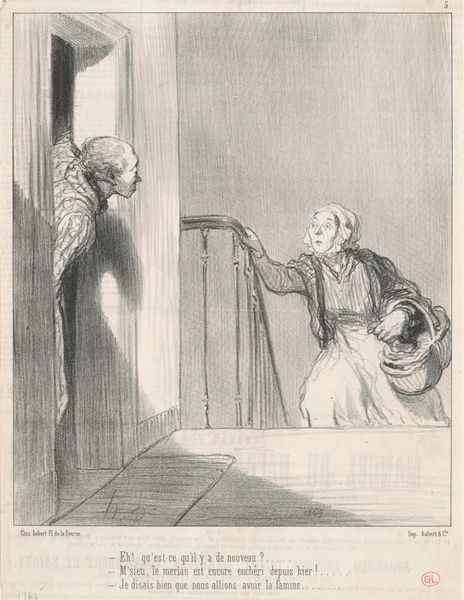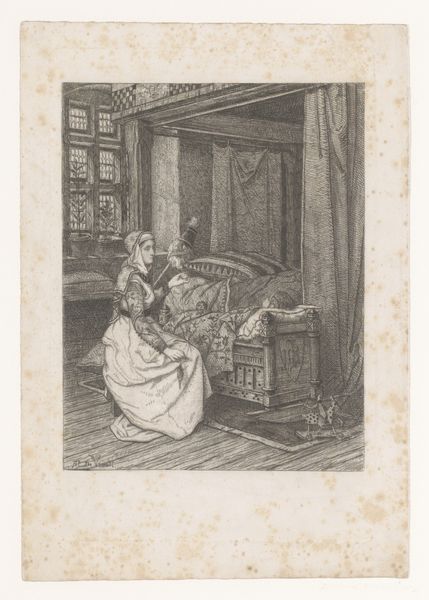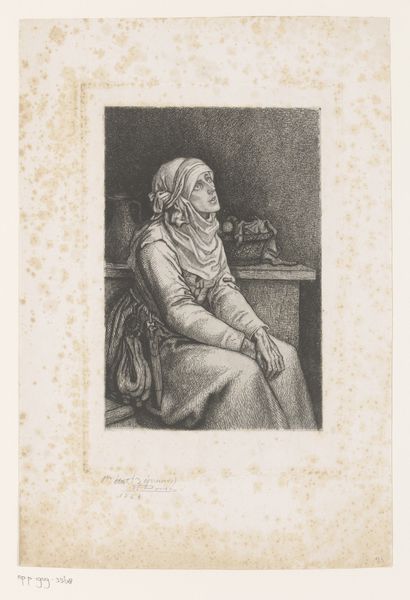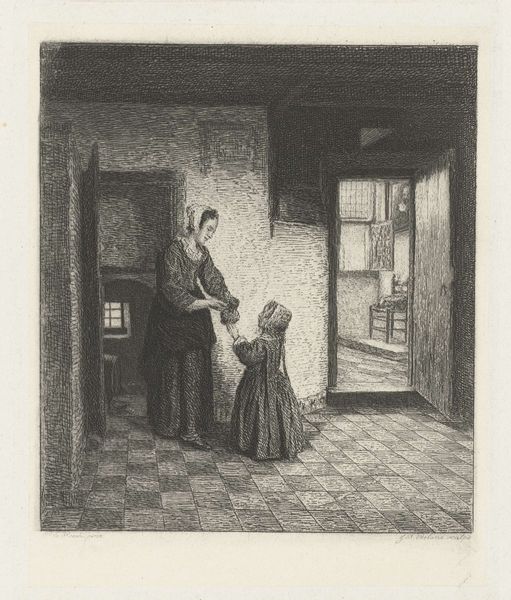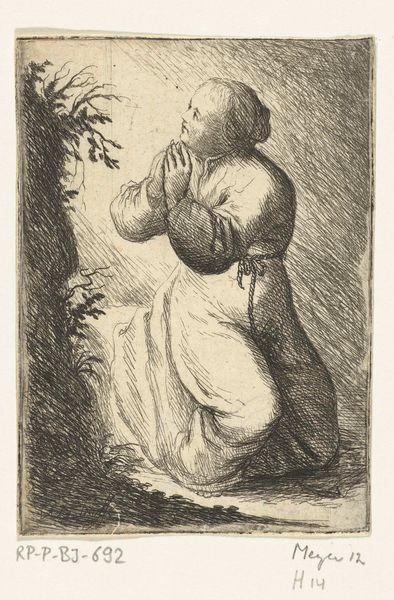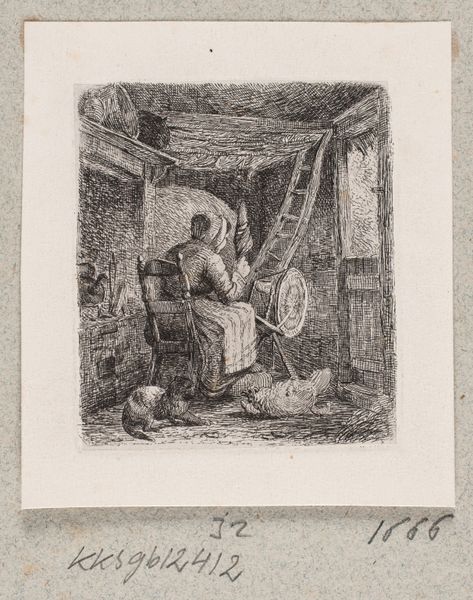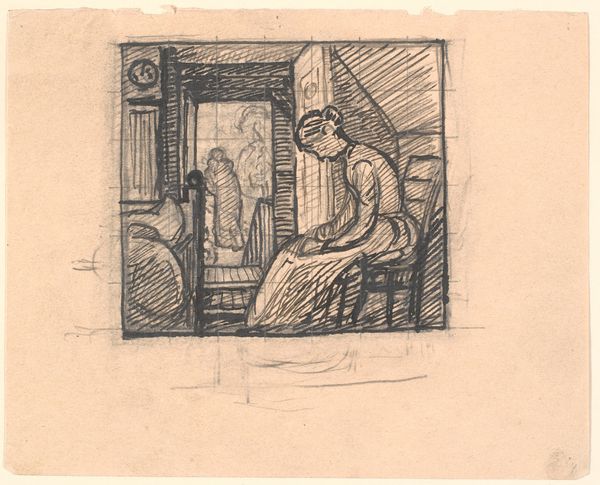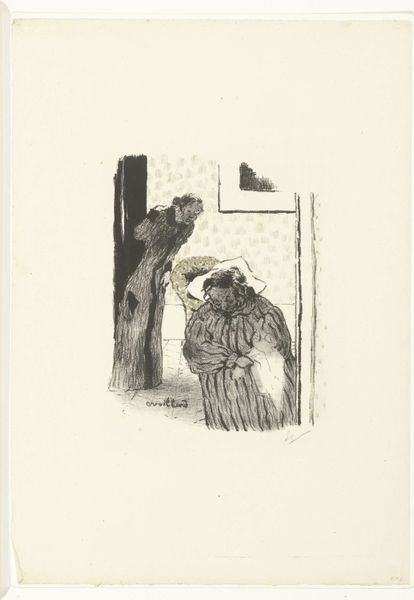
drawing, print, etching, intaglio
#
portrait
#
drawing
# print
#
etching
#
intaglio
#
romanticism
#
genre-painting
#
realism
Dimensions: height 90 mm, width 81 mm
Copyright: Rijks Museum: Open Domain
Editor: This etching, "Vrouw leunend op een onderdeur," or "Woman Leaning on a Half Door," from the early 19th century by Anthonie Willem Hendrik Nolthenius de Man, feels so intimate and grounded in the everyday. There's a quiet realism to it, even a bit of Romanticism. What stands out to you when you look at this piece? Curator: It strikes me as a carefully constructed commentary on social space. Genre painting of this kind served a growing middle class who consumed images of the working class as quaint. What are we invited to consider about the "woman" herself? Is this a portrait, or a study of "peasant life"? Editor: I hadn't thought about the art market's role in its depiction. So, her gaze out the door becomes a mediated experience, filtered through social classes and their assumptions. Curator: Precisely. This etching, as a readily reproducible print, likely circulated widely. Consider its consumption: middle-class viewers potentially romanticized her humble setting, finding virtue in the simplicity depicted. Do you think that assessment stands? Editor: It's a little unsettling now that you mention it, this sort of detached admiration. Knowing it was an easily distributed print shifts my perspective. I'm now seeing her from the perspective of a middle-class art buyer. Curator: It complicates a straightforward interpretation, doesn't it? Realism is rarely just a clear window onto reality, but rather a constructed narrative with embedded assumptions. Editor: Definitely something I will take with me as I view artwork. Thank you for clarifying and broadening my understanding. Curator: My pleasure, it has been a worthwhile reflection.
Comments
No comments
Be the first to comment and join the conversation on the ultimate creative platform.
